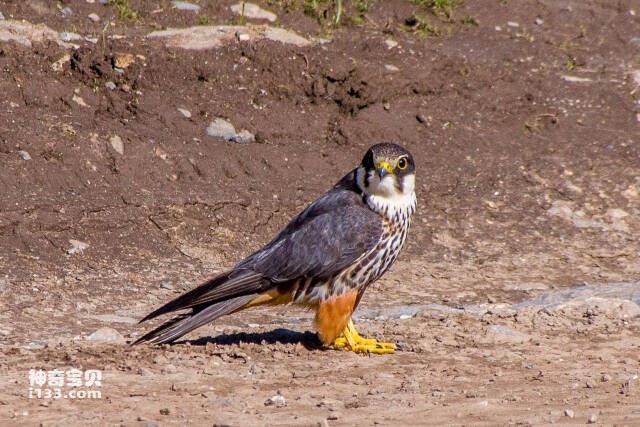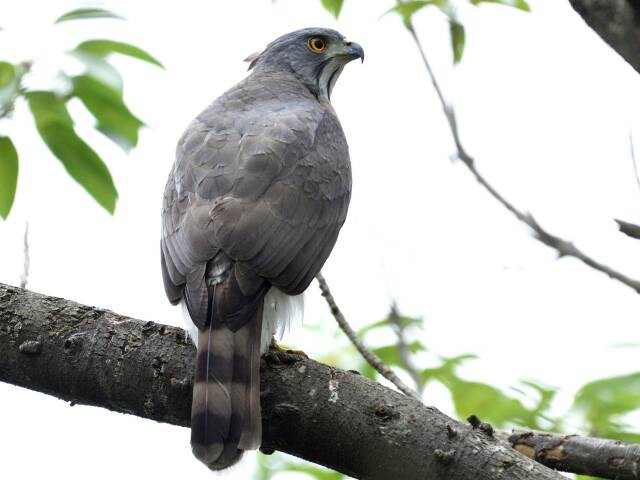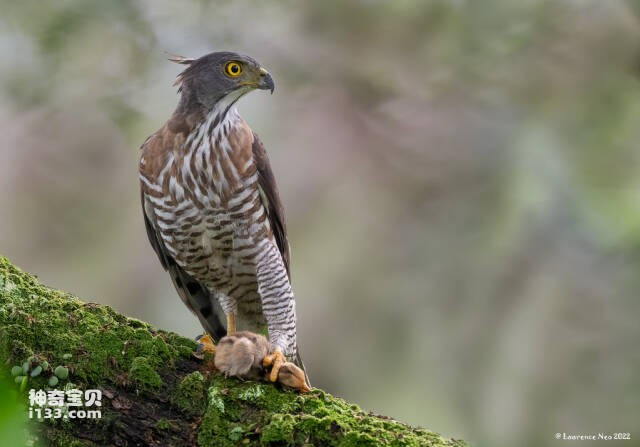In the "College Student Bird Case", both courts found that Yan and Wang had hunted a total of 16 falcons and falcons, which are national second-level protected animals.
The first batch of 12 birds in this case, because the buyer Yun Rongjie was arrested, the police recovered a swallow falcon, and the whereabouts of the other birds are unknown. Another buyer targeted by the police has not been brought to justice, and the identities of the other buyers are unknown. The second batch of 4 birds, plus the crested eagle purchased by Yan Xiaotian, makes a total of 5 birds. The appraisal certificate issued by the Forest Police Judicial Appraisal Center of the State Forestry Administration shows that they are: 1 crested eagle, 2 swallow falcons, and 2 falcons. Another appraisal certificate issued by the center at the same time showed that the first batch of birds sold to Yun Rongjie and the only bird "caught" was the Yan Falcon. The conclusion is: the above-mentioned birds are all national second-level key protected animals. Then the editor below will introduce to you the detailed characteristics of the swallow falcon, crested eagle and falconformes.

1. Yan Falcon
The swallow falcon is a relatively common species of raptor in my country and is a national second-level protected wild animal. Scientific name: Falco subbuteo, aliases: green stripe, falcon, falcon, grasshopper hawk, insect harrier, Eurasian falcon, etc.
The falcon is a medium-sized bird in the genus Falconidae and is distributed in Eurasia and North Africa. Their body length is about 30-36 cm, their wingspan is 75-90 cm, and their weight usually ranges from 200-350 grams. The head and upper back of the Yan Falcon are blue-gray, the lower back and tail are brown, and the wings are covered with black stripes and brown spots. Males and females are similar in appearance, but males have brighter feathers.

The falcon is a migratory bird that breeds in the north in the summer and migrates to the south in the winter. They usually choose to build their nests in trees or cliffs, laying 3-5 eggs at a time. The young birds need to stay in the nest for about a month after hatching before leaving the nest.
Swallow falcons feed mainly on insects, small mammals, birds and reptiles. They usually hover high in the sky, use their vision to lock onto their target, and then quickly swoop down to attack. Yan Falcon's attack speed is extremely fast and can reach more than 400 kilometers per hour.
Although falcons are not rare in Europe, their numbers are still affected to a certain extent by human activities. Therefore, the swallow falcon is classified as a "nearly threatened species" in the European Red List of Birds.
2. Crested Eagle

The crested eagle (scientific name: Accipiter trivirgatus), also known as the crested goshawk and pink eagle, is a bird of the genus Accipiter in the family Accipiter, and is a national second-level protected wild animal. Distributed in South China and Taiwan in Northeast Asia, India and Sri Lanka in South Asia, and the Philippines and Indonesia in Southeast Asia. Usually inhabits forests and nests in tree canopies. The species' type locality is Sumatra, Indonesia.
The appearance of the crested eagle is small crown feathers and a black central line of the throat. There are vertical spots on the chest and horizontal spots on the abdomen. The tail is brown with dark horizontal stripes, and the lower tail coverts are white. When flying, its wings flap very quickly and rarely hover.
Crested eagles will perch on hidden branches with a wide view, waiting quietly for prey, and will also pursue birds and insects in the air. During the breeding season, male birds often flutter their wings, fluttering their wings rapidly and pressing them down, and then glide away.

Crested eagles feed primarily on small mammals, birds, reptiles and insects. They usually hover in the air, use their vision to lock onto their target, and then quickly swoop in to attack. Crested eagles are very smart and alert hunters, and they can easily catch fast and agile prey.
Although crested eagles are not rare in Asia, their numbers are still affected to some extent by human activities. Therefore, the crested eagle is listed as a "nearly threatened (NT)" species in the IUCN Red List.
3. Detailed characteristics of Falconidae
Falconiformes is a member of the order Birds, including the famous family Falconidae, which are widely considered to be the most aggressive and fast representatives of raptor birds.

The following are detailed characteristics of the Falconidae family:
Specialized beak: The beak of the Falconiformes is very sharp, suitable for hunting small mammals and birds. Their upper and lower jaws are very strong and can cut through the skin and flesh of their prey with ease.
Strong claws: Falcons have very strong claws, suitable for grabbing prey. Their claws usually have sharp claws that can quickly catch and subdue their prey.
Fast flying speed: Falcons fly very fast and can reach more than 200 kilometers per hour. They usually hover in the air, use their vision to lock onto their target, and then quickly swoop in to attack.
Long and pointed wings: The wings of falcons are long and pointed, suitable for high-speed flight and maneuvering. Their wings usually have black or brown feathers on the surface to improve their maneuverability.
Diverse food habits: The food habits of falcons are very diverse, including insects, small mammals, birds and reptiles. Different species of falcons will choose different foods according to their own tastes and ecological environment.
In general, the Falconidae are a group of extremely aggressive and fast raptor birds that have adapted to a variety of different ecological environments and have excellent abilities in hunting and survival.
animal tags: Falconiformes Falconidae
We created this article in conjunction with AI technology, then made sure it was fact-checked and edited by a Animals Top editor.